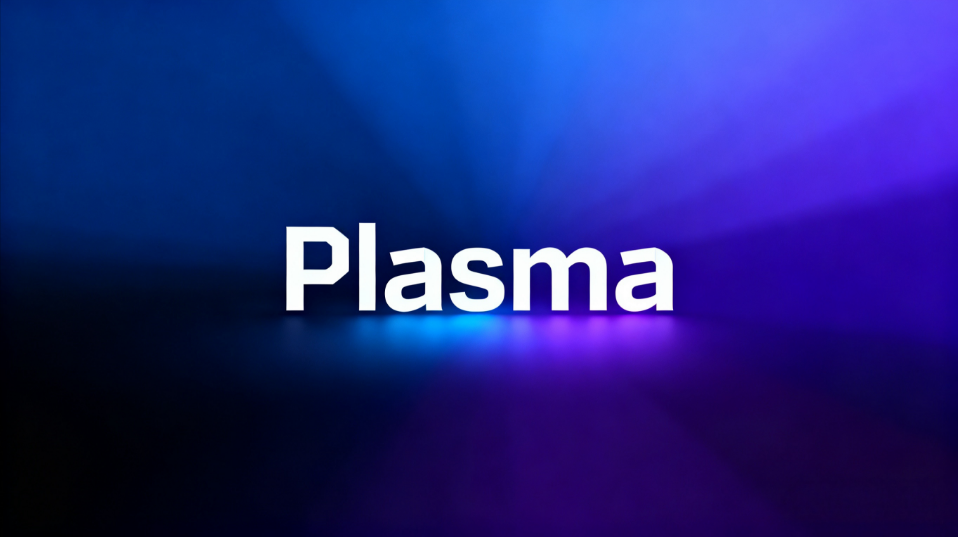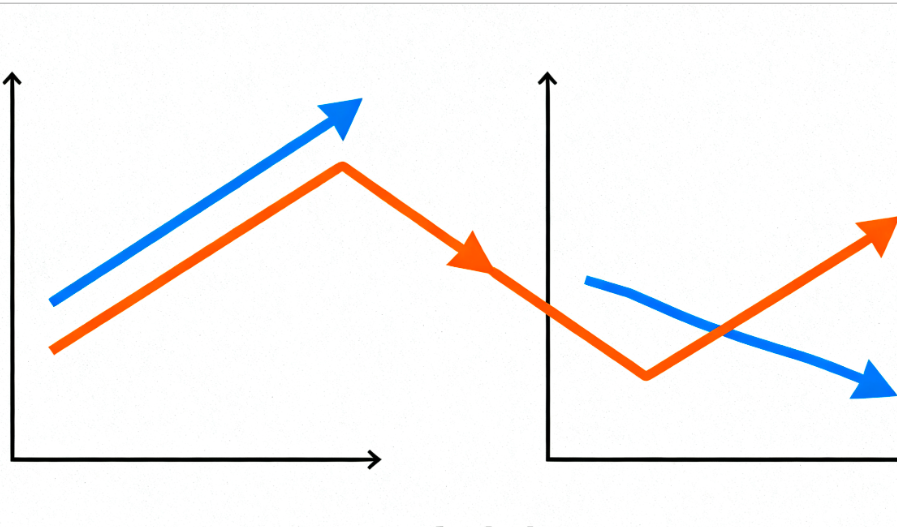
Over the past few years, stablecoins have been quietly reshaping the global payment landscape. By October 2025, the total market capitalization of stablecoins had surpassed $300 billion, with an annual trading volume reaching a staggering $27.6 trillion. Their payment volume has even exceeded that of Visa and Mastercard, making them the true "hard currency" of the crypto market. Whether for cross-border remittances, DeFi trading, or daily micro-payments, stablecoins are moving from the background to center stage.
But problems have followed. Today's mainstream public chains—Ethereum, Tron—still appear cumbersome when facing large-scale payments: high transaction fees, delayed transaction confirmations, and the requirement for users to hold additional native tokens to pay for Gas. These pain points leave a significant gap between stablecoins and their "true widespread adoption" as everyday payment tools.
Thus, a new trend has emerged: dedicated stablecoin public chains. They are no longer content with being "vassals of the crypto market" but are born specifically for payments, aiming to be as efficient as Visa, yet more open, lower cost, and more globalized.
Plasma is one of the most representative attempts. Jointly built by Silicon Valley VCs and crypto giants, Plasma's vision is to create a payment network with zero fees, instant settlement, and Bitcoin-level security. It boldly uses Bitcoin as a settlement security layer and natively supports stablecoin payments at the protocol level, striving to solve the persistent issues of traditional public chains in payment experience.
Plasma is not just a new chain; it is reconstructing the stablecoin value chain and attempting to颠覆 the existing rules of on-chain payments.
01
Plasma's Distribution, Community, and Marketing: From Capital Backing to Viral Growth
Plasma's rapid rise is inseparable from its solid financing foundation and ingenious distribution strategy. Since its launch in 2024, the team has completed multiple funding rounds, totaling $74 million, with a valuation of approximately $500 million. The investor lineup is impressive, covering top institutions like Framework Ventures, Bitfinex, Tether CEO Paolo Ardoino, and Peter Thiel's Founders Fund. Capital provides not only funds and credibility but also channels and resources. Tether's deep involvement allows Plasma to naturally inherit USDT's vast ecosystem; Bitfinex's experience helps guide its global payment implementation. This capital endorsement is comparable to Ethereum's early VC support, allowing Plasma to accumulate sufficient momentum even before its mainnet launch.
In its distribution mechanism, Plasma demonstrated innovation. Its token, XPL, has a fixed total supply of 10 billion, with an initial circulating supply of about 18%. The inflation rate gradually decreases from 5% to 3%, balancing incentives and sustainability. The team and early investors hold 50% of the tokens but are subject to a three-year lock-up (including a one-year cliff), effectively mitigating sell-side pressure. Unlike "spray-and-pray airdrops," Plasma adopted a "pre-deposit stablecoins for XPL" model: users deposit USDT, USDC, or DAI into the Plasma vault on Ethereum, with the allocation decreasing over time and based on amount. This design not only avoided "airdrop farming" but also successfully ignited market enthusiasm. The first $500 million allocation was snapped up within minutes, and subsequent caps were sold out within half an hour, even leading to a "buying frenzy" where users spent tens of thousands of dollars on Gas fees. This method achieved viral spread through word-of-mouth and social transmission, fully embodying its "inclusive" positioning.
Exchange partnerships became another ace card for Plasma. Even before the mainnet launch, integration with Binance was achieved, allowing 280 million users to directly connect their stablecoins to Aave on Plasma. The Binance HODLer event distributed 75 million XPL (0.75% of total supply), with an additional 25 million XPL rewarding early stakers, resulting in an average per capita profit of up to $8,000. The USDT lock-up product sold out within 1 hour, attracting $250 million. Subsequently, Bitget Launchpool listed XPL, offering 2.2 million tokens as rewards; OKX Boost launched a 15 million XPL reward pool, requiring users to stake OKB or stablecoins on X Layer. These partnerships brought a massive user base while enhancing engagement and stickiness through airdrops, points, and community interaction.
In community marketing, Plasma also operated efficiently. The team is active on X (Twitter) and Chinese social media, leveraging media outlets like Odaily Planet Daily and BlockBeats for promotion. On launch day, DragonFly Capital founder Avichal Garg publicly praised Plasma as the "new settlement layer for stablecoin payments," quickly sparking discussions on social platforms. Simultaneously, Plasma rapidly integrated with the ecosystem on a technical level: at launch, it integrated with over a hundred protocols like Aave, Curve, and Maker, and joined the Chainlink Scale program. On October 3, 2025, Plasma completed integration with Chainlink, providing oracle, CCIP, and Data Streams services, expanding cross-chain and payment scenarios; the cooperation with Trust Wallet further lowered the entry barrier for global users.
The combined force of capital, distribution, exchanges, and community directly laid the foundation for Plasma's explosive growth. In its first week, TVL quickly climbed to $8.7 billion, with over $7 billion in stablecoin injections, propelling it into the top five DeFi protocols. Pendle attracted $318 million in new liquidity just four days after launching on Plasma, demonstrating the ecosystem's strong appeal. Overall, by closely integrating financing, distribution, exchange cooperation, and community marketing, Plasma not only achieved a rapid breakthrough from 0 to 1 but also paved the way for subsequent technological implementation and ecosystem expansion.
02
Plasma Chain's Core Design and Features: From Zero-Friction Payments to a Modular Ecosystem
Plasma's design focuses squarely on the core pain point of "stablecoin payments," aiming to provide a user experience close to traditional mobile payments like Alipay and WeChat Pay. Its underlying layer uses an improved HotStuff-based PlasmaBFT consensus mechanism, with a TPS exceeding 1000 and transaction confirmation times under 1 second, making it particularly suitable for high-frequency, low-value scenarios. An EVM-compatible Rust client ensures smooth DApp migration. Simultaneously, Plasma deliberately avoids entertainment applications like NFTs and Meme coins, concentrating resources on payments, lending, and settlement, positioning itself as a dedicated "settlement layer" for stablecoins.
The most representative innovation is the zero-fee transfer mechanism. The system categorizes transactions based on complexity: ordinary one-to-one transfers are completely free; complex operations involving multiple contract calls or batch liquidations are charged based on resource consumption. To prevent abuse, Plasma introduces low-barrier staking or lightweight verification (e.g., email/phone number), with a Paymaster maintained by the foundation uniformly subsidizing Gas, enabling "zero-friction" transfers in the vast majority of scenarios. Furthermore, users can directly pay Gas fees with USDT, pBTC, or BTC, without needing to hold XPL separately, significantly lowering the usage barrier. For newcomers, migration is easier; for merchants, instant settlement means higher efficiency.
In terms of security, Plasma adopts a hybrid strategy anchored to Bitcoin. Cross-chain security is enhanced through a threshold signature bridge, a dual-layer validator architecture isolates consensus and transfer functions, and the state is periodically anchored to the Bitcoin PoW network to resist rollback risks. This mechanism leverages Bitcoin's finality to add an external security anchor to the network, alleviating trust concerns associated with centralized sidechains. On privacy, Plasma employs a "controlled transparency" design: on-chain data is public by default for auditability, but users can choose to hide addresses or amounts, disclosing them only in compliant or authorized scenarios, striking a balance between privacy and regulation.
Plasma's modular architecture lays the foundation for its ecosystem expansion. It deeply integrates with Chainlink, supporting Data Streams and CCIP, covering over 60 chains, enabling low-latency price feeds and cross-chain communication to support cross-border payments and multi-chain settlement. In application deployment, Plasma pays special attention to offline payment scenarios: it has integrated with the African payment giant Yellow Card (a Visa partner, covering 20+ countries) and supports regional stablecoins like BiLira, targeting the cross-border remittance and local settlement markets. Meanwhile, Plasma One, as a new neobank product, offers banking, spending, and wealth management functions for the unbanked population, combined with a 4% cashback on payment cards and over 10% annualized yield, bridging on-chain and offline channels.
In the DeFi ecosystem, Plasma also quickly aggregated liquidity. Aave attracted over $2 billion TVL on its first day, Pendle added $318 million in liquidity in 4 days; Balancer provided Boosted Pools and StableSurge hooks to improve capital efficiency; Clearpool launched the yield-bearing stablecoin cpUSD, empowering institutional credit; Ether.fi allocated a $500 million staking vault. Even AI agent tools like ZyFAI automatically managed 867,000 USDT on Plasma, achieving an average APY as high as 21.84%. Through these integrations, Plasma not only accumulated capital liquidity but also created diverse玩法, allowing users to earn XPL incentives through lending, liquidity mining, and cross-chain operations.
Overall, Plasma's design consistently adheres to the principle of "usability first." Whether it's tiered fees, multi-asset Gas, Bitcoin anchoring, controlled privacy, or modular architecture, all innovations point towards the same goal: making stablecoin payments truly "everyday." This is both a correction of the pain points of existing public chains and a powerful response to the needs of emerging markets and institutions.
03
Plasma's Medium to Long-Term Challenges and Prospects: Opportunities and Risks Coexist
Plasma's performance since its mainnet launch has undoubtedly been remarkable, but amidst its rapid ascent, its future remains full of uncertainties and challenges.
In the competitive landscape, dedicated stablecoin chains have already begun flourishing in multiple forms. Circle's Arc chain focuses on USDC payments, emphasizing ultimate compliance: it uses a permissioned PoA consensus, has built-in KYC/AML mechanisms, and uses USDC as the Gas token, directly anchoring on-chain costs to the US dollar, naturally fitting regulated institutional users. Stripe's Tempo chain takes a different route, strengthening payment ecosystem integration: it supports paying Gas with any stablecoin via an AMM mechanism, avoiding over-reliance on a single issuer, and leverages the resources of giants like Visa and Shopify to attempt to create a "user payment - merchant receipt" closed loop. In comparison, Plasma focuses more on emerging markets and high-frequency, low-value payments, attracting ordinary users and Web2 migrants with its "zero-friction experience." Its positioning does not directly overlap with Arc or Tempo. The key to standing out lies in whether Plasma can build its own ecosystem moat.
Regulation is another major test. With the current global tightening of stablecoin regulations, Circle's US compliance advantage makes Arc easier to integrate into European and American markets; Tether, due to USDT's dollar peg mechanism and information disclosure issues, has long been at the center of regulatory controversy. Plasma's deep binding with Tether allows it to quickly mobilize massive liquidity but will also make it directly affected by regulatory dynamics. If it wants to become a truly compliant payment infrastructure in the future, Plasma must present more flexible solutions across different jurisdictions, especially finding a balance between privacy protection and audit transparency.
User retention and the sustainability of token incentives are also major concerns. On launch day, Plasma attracted over $2 billion TVL into applications like Aave, and futures trading volume once exceeded $600 million, but the hype did not last long. Currently, the XPL price has fallen from its peak of $1.69 to $0.75. Therefore, the community generally worries that if early incentives are exhausted or mining rewards diminish, users might leave en masse. The release schedule of the token economy, the actual yields from ecosystem applications, and the sustainability of subsidies for the "zero-fee" model will all directly impact Plasma's long-term stickiness.
On the technical front, Plasma's innovations also come with risks. The free transfer model, without effective risk control, could face spam transaction attacks; high reliance on USDT brings centralization and censorship concerns; the limited number of early validators may raise questions about decentralization; and while the Bitcoin bridge solution enhances security in design, it still lacks sufficient time for validation. Meanwhile, established public chains like Ethereum, BSC, and Solana have significantly reduced fees; convincing users to migrate to a dedicated chain is no easy task for Plasma.
Overall, Plasma is not telling a new "stablecoin story" but is attempting to reconstruct the underlying logic of the stablecoin value chain: making settlement lighter, cheaper, and more widespread. Whether by leveraging Tether's liquidity advantage or切入 the payment scene with zero fees, Plasma is pushing stablecoins from speculative tools towards global infrastructure. Competition, regulation, retention, and security remain hurdles it must overcome, but this is precisely where the opportunity lies. If Plasma can continuously expand its applications within a compliant framework and establish a stable network first in emerging markets, it might truly have a chance to颠覆 the on-chain payment landscape in the coming years and become the veritable "digital dollar settlement layer."
















